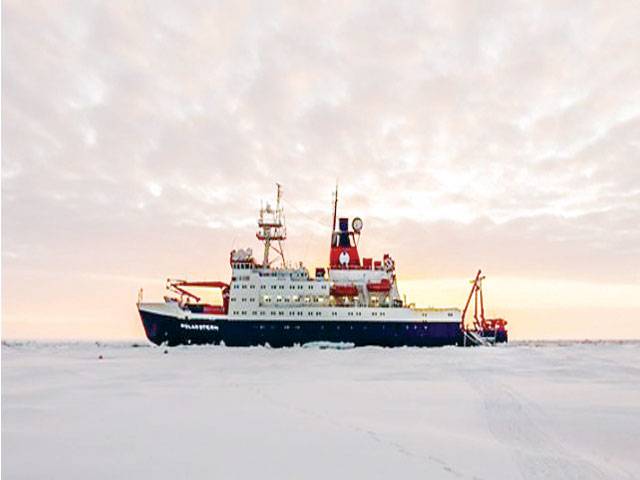RUSSIA - It’s being described as the biggest Arctic science expedition of all time.
The German Research Vessel Polarstern is about to head for the far north where it intends to drift in the sea-ice for an entire year.
Hundreds of scientists will visit the ship in that time to use it as a base from which to study the climate.
Its scale means it must be an international effort. RV Polarstern will be supported by icebreakers from Russia, Sweden and China.
In deep winter, when these vessels can’t pierce the floes to reach the German ship, aeroplanes and long-range helicopters will deliver the supplies and relief teams. MOSAiC’s objective is to study all aspects of the climate system in the Arctic. Instrument stations will be set up on the ice around the Polarstern, some of them up to 50km away.
The ice, the ocean, the atmosphere, even the wildlife - all will be sampled.
he year-long investigations are designed to give more certainty to the projections of future change.
Prof Markus Rex from Germany’s Alfred Wegener Institute in Potsdam is the expedition leader. He said the Arctic was currently warming at twice the rate of the rest of the planet but that the climate models were highly uncertain as to how the temperature trends would develop in the coming decades.
“We don’t have any robust climate predictions for the Arctic and the reason is we don’t understand the processes there very well,” he explained.
“That’s because we were never able to observe them year round and certainly not in winter when the ice is at its thickest and we can’t break it with our research vessels,” he told BBC News.
Embedding in the sea-ice will be done close to 85 degrees North and 130 degrees East.
Precise positioning will be important. Modelling of the winds and currents suggests the ship should drift across the top of the planet, getting to within a couple of hundred km from the North Pole, before then being ejected from the frozen floes between northeast Greenland and Svalbard - the Fram Strait.
But there is a critical point in this 2,500km journey where, if the ship meanders too far to the west, it could get pulled into the Beaufort Gyre - the great clockwise movement of water and ice in the Arctic. Once caught in this gyre, it would need a huge effort to escape.
The expedition has definite echoes of the Norwegian explorer Fridtjof Nansen’s attempt in the 1890s to be the first person to reach the North Pole by drifting in a ship locked in ice.
The Canadian Coast Guard vessel Des Groseilliers mounted a drift mission in the late 1990s which became known as Ice Station SHEBA.
The Norwegian Polar Institute’s Lance vessel undertook a drift expedition in 2015; as did the scientific schooner Tara, which traversed the frozen ocean - again, from Siberian waters to the Fram Strait - in 2006/7.
Friday, April 19, 2024
Arctic expedition to drift in sea-ice for a year

-GN
3:56 PM | March 28, 2024
4:14 PM | March 23, 2024
Minister reviews naan, roti prices
April 19, 2024
ETPB land worth Rs 40b retrieved so far
April 19, 2024
Lahore revamping plan to complete by June 30
April 19, 2024
CCPO reviews security for by-elections, NZ cricket matches
April 19, 2024
A Tense Neighbourhood
April 19, 2024
Dubai Underwater
April 19, 2024
X Debate Continues
April 19, 2024
Hepatitis Challenge
April 18, 2024
IMF Predictions
April 18, 2024
Kite tragedy
April 19, 2024
Discipline dilemma
April 19, 2024
Urgent plea
April 19, 2024
Justice denied
April 18, 2024
AI dilemmas unveiled
April 18, 2024
ePaper - Nawaiwaqt
Advertisement
Nawaiwaqt Group | Copyright © 2024





